Stone showers offer a timeless blend of luxury and natural elegance, enhancing both the aesthetic and functional aspects of any bathroom. From sleek marble slabs to rustic river rock floors, there’s a stone design to suit every style and spatial constraint. Whether you prefer the minimalist appeal of large-format slate or the rich texture contrasts of mosaic accents, these ideas harness the inherent beauty of materials like marble, travertine, slate, and quartzite. Innovative layouts—such as herringbone patterns, hexagonal tiling, and curbless walk-in configurations—maximize visual interest while ensuring practicality through proper waterproofing and slip-resistant surfaces. Explore these 20 design concepts to inspire your next remodel and transform your shower into a spa-worthy retreat.
1. Marble Waterfall Feature

Incorporating a marble waterfall spout creates both a functional rinse and a sculptural focal point. A single marble slab can be bookmatched to showcase continuous veining, lending an uninterrupted flow of pattern across walls. Positioned at shoulder height, the waterfall provides gentle, cascading water that feels more spa-like than a conventional showerhead. Polished marble surfaces reflect light, brightening the enclosure, while recessed niches carved from the same slab maintain a seamless look. This luxurious feature combines minimalist design with opulent materials for a statement-making shower upgrade.
2. Travertine Veneer Walls
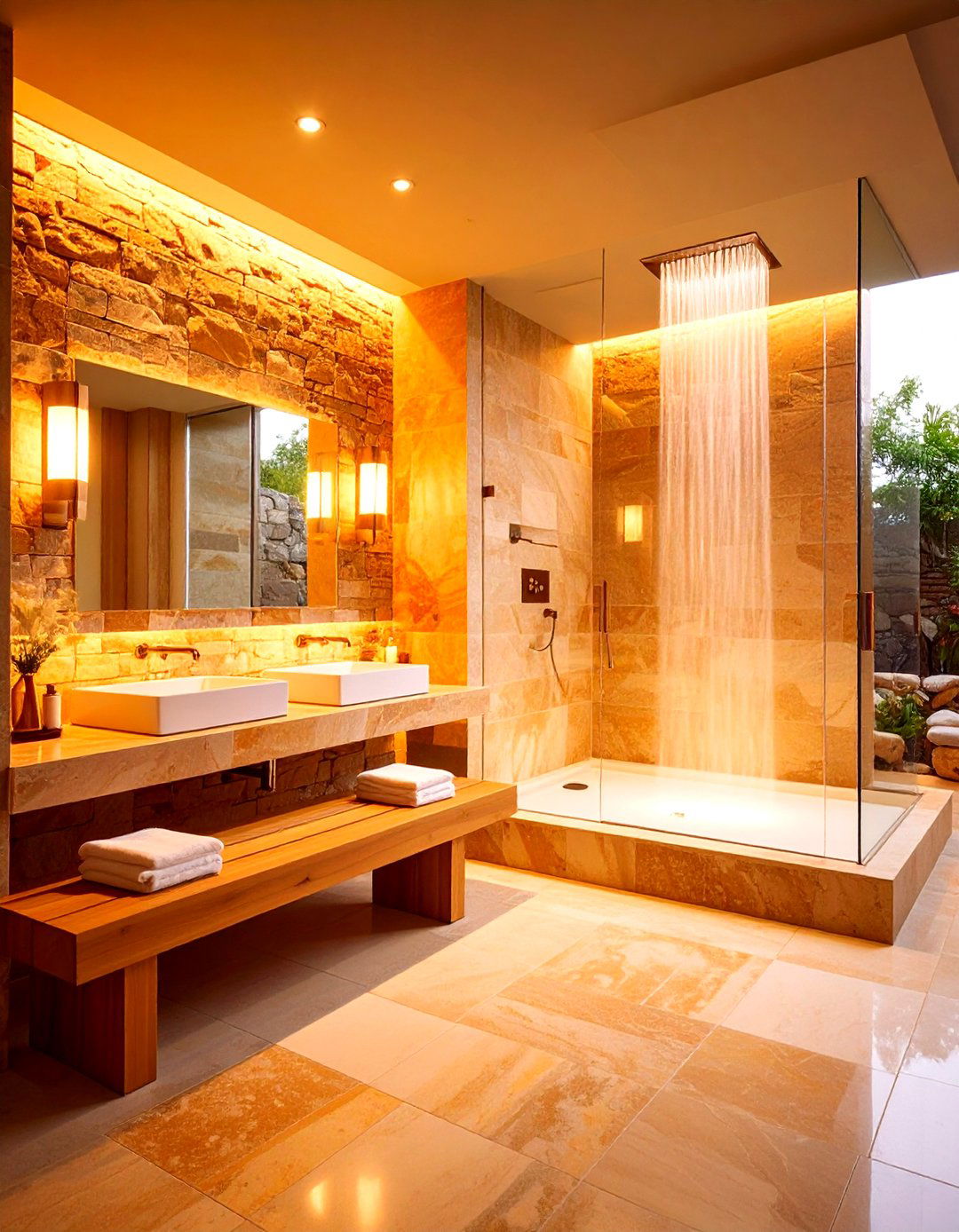
Travertine offers warmth through its natural earth-toned pores and subtle striations. Thin-cut travertine veneer panels adhered directly to shower walls create a continuous surface without grout lines, emphasizing the stone’s inherent beauty. Its honed finish provides a matte texture that minimizes slip risks, while tumbled edges soften transitions between panels. Travertine’s neutral palette complements wood or brass accents—such as floating benches or rainfall fixtures—to enhance a spa-inspired ambiance. Occasional veining and color variation guarantee each installation is unique, transporting users to rustic Roman baths.
3. Stacked Slate Accent Wall
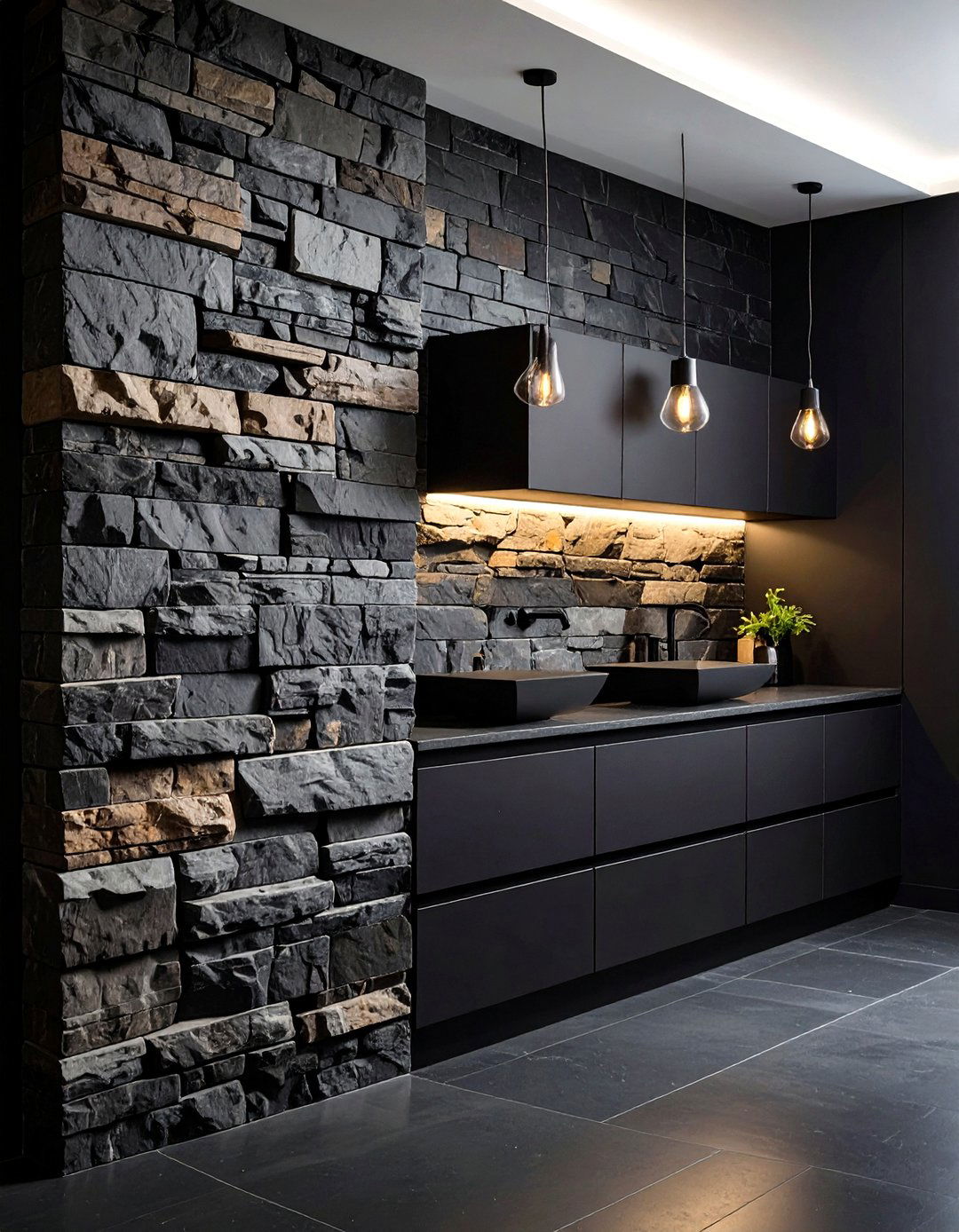
Stacked slate introduces dramatic texture and depth through layered, three-dimensional profiles. Utilizing ledger stone—thin, rectangular pieces of slate—creates a rugged, natural-stone mosaic that contrasts smooth tile or glass shower doors. Arranging pieces in varying heights accentuates shadows and highlights, making the wall a central feature. Dark gray and charcoal tones pair well with matte black fixtures and clear glass enclosures, reinforcing modern industrial or mountain-lodge styles. Proper sealing protects the porous slate from water damage, ensuring durability in a steam-filled environment.
4. Quartzite Mosaic Floor
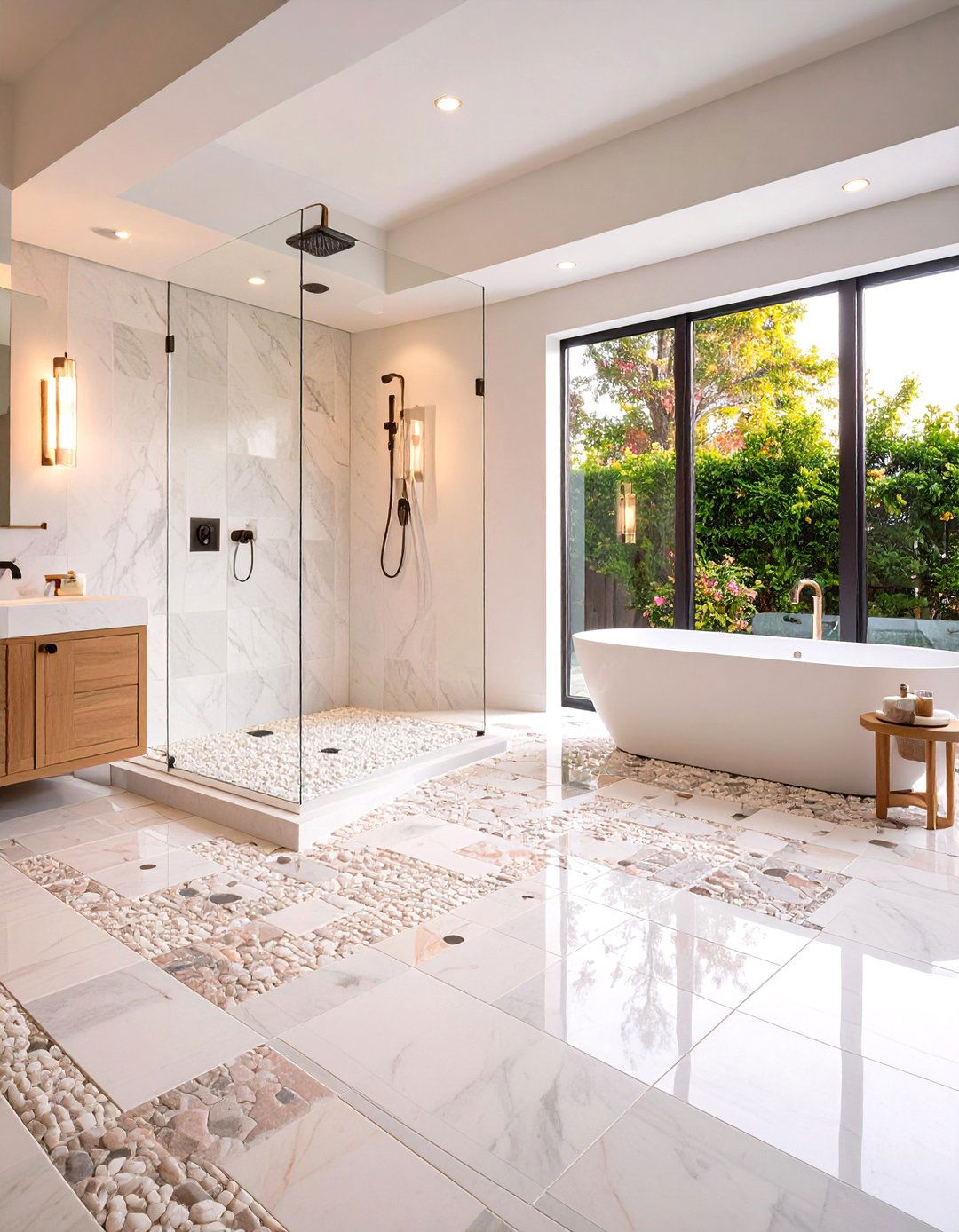
Quartzite’s hardness makes it ideal for high-traffic shower floors. Cutting it into small mosaic tiles allows for superior grip, as the multitude of grout lines provides natural slip resistance. Color variations—from creamy whites and soft grays to blush pinks—create dynamic patterns underfoot. A contrasting grout color further emphasizes the intricate grid, offering both visual interest and practical traction. When paired with large stone slabs on walls, the floor mosaic grounds the design without overwhelming the space.
5. Curved Pebble Tile Niche
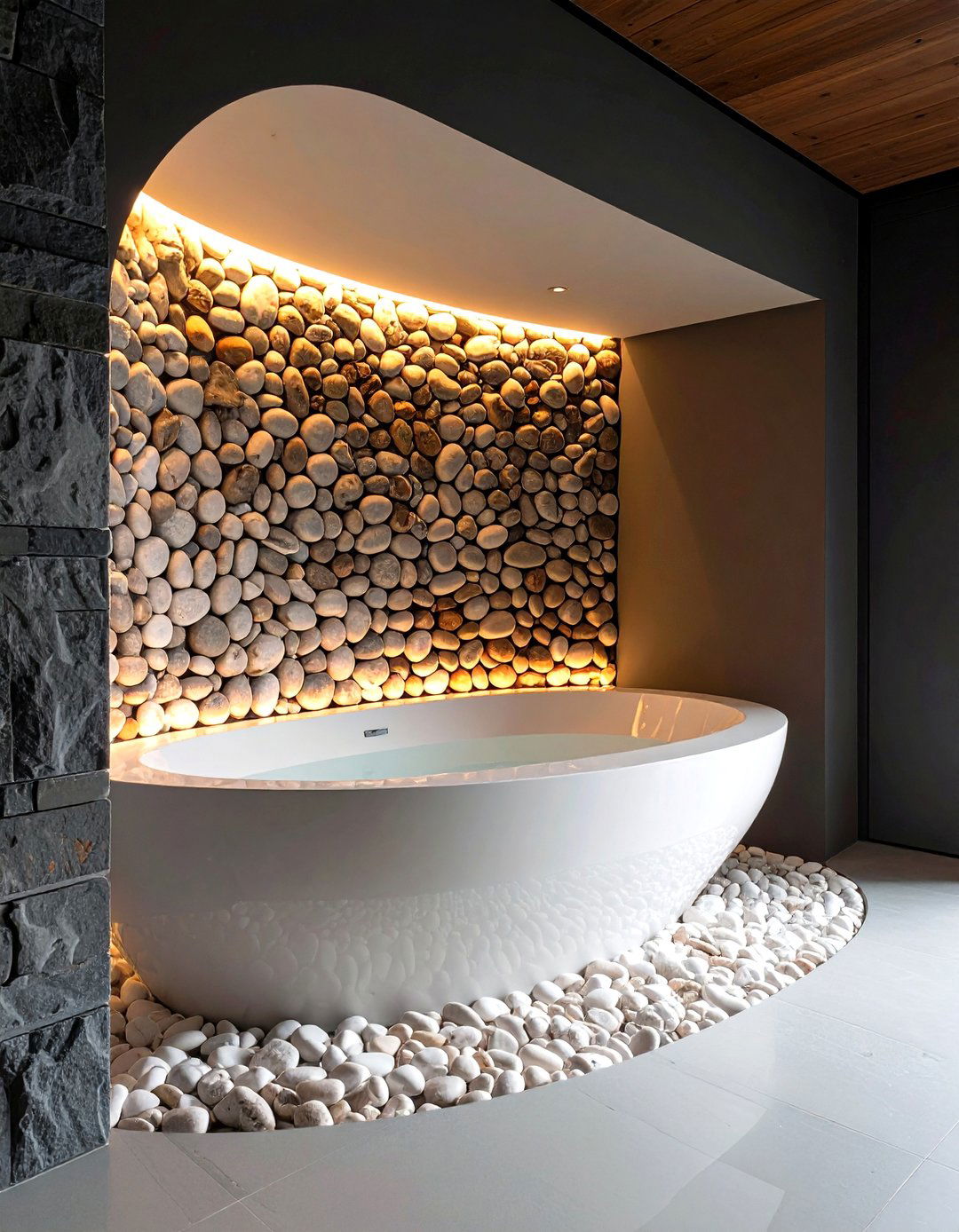
A recessed shower niche lined with Bali pebble tile introduces organic texture against flat stone walls. Pebble mosaics—usually 1″–2″ in diameter—form curved, flowing patterns that echo riverbeds. Their smooth, undulating surfaces invite touch and enhance sauna-like relaxation. The niche’s back wall becomes a focal point, ideal for displaying bath products. Coordinating the pebble palette with neutral stone tiles ensures cohesion, while a subtle ledge provides practical storage.
6. River Rock Pebble Floor

Laying polished river rock pebbles across the shower floor creates a natural foot massage effect. The rounded stones, ranging from ½″ to 1″, are mounted on mesh sheets for easy installation and consistent spacing. Grout fills the valleys, securing the pebbles while enhancing grip. This approach mimics outdoor riverbeds, transforming the shower into a grounding, spa-like environment. Sealants maintain water resistance and prevent mold growth in crevices, ensuring longevity.
7. Mixed Stone Tiling Patterns
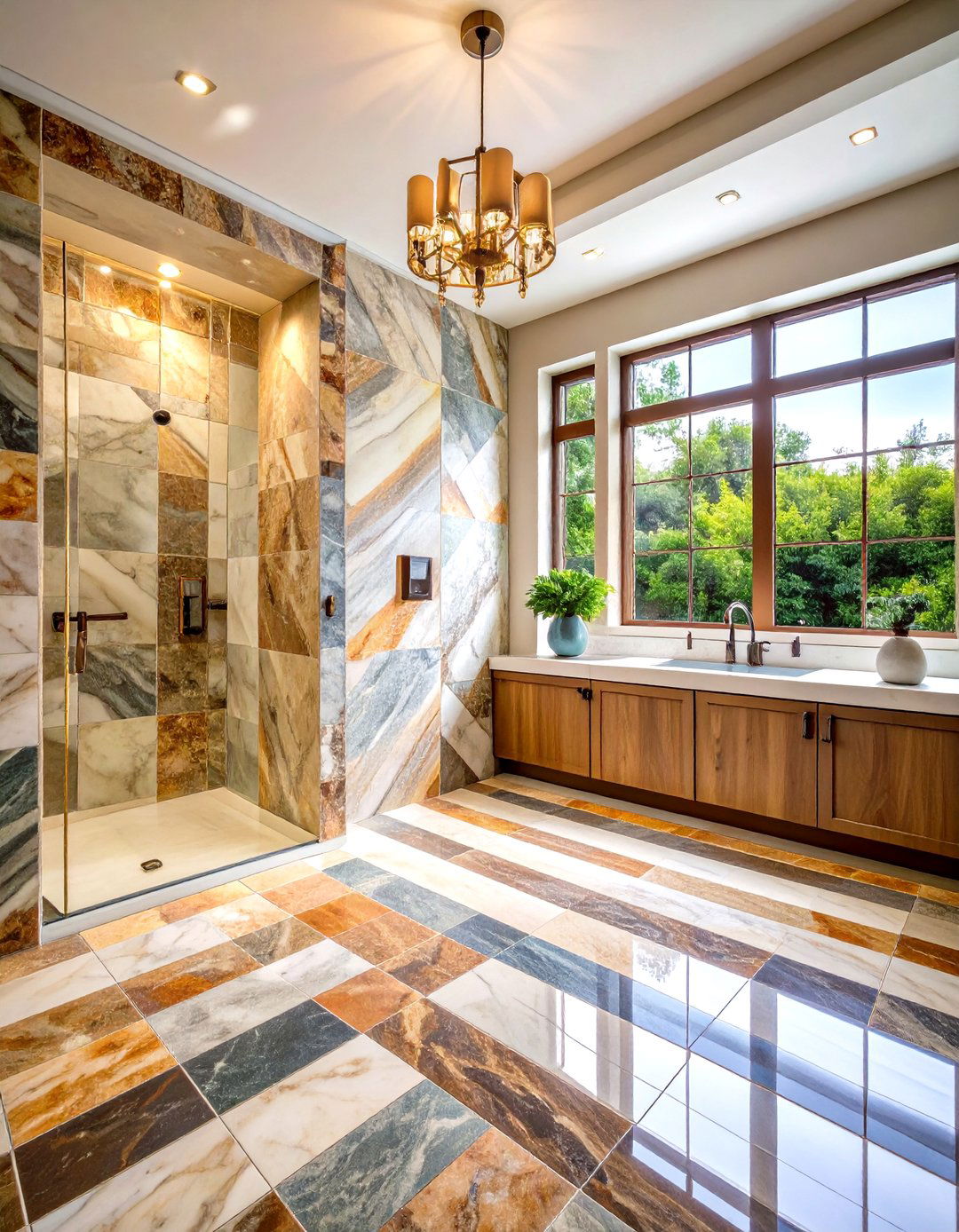
Combining different stone types—such as marble, travertine, and slate—in alternating stripes or checkerboard formations yields a bold, custom look. For instance, a band of white Carrara marble atop warm limestone can accentuate architectural elements or guide the eye upward. Alternating materials also introduce textural contrast: polished versus honed or smooth versus cleft. Strategic placement around niches, benches, or accent walls highlights these material shifts, making every surface an artistic statement.
8. Marble Mosaic Accent Strip

Incorporate a horizontal band of small marble mosaic tiles—such as 1″ hexagons or 2″ squares—mid-wall to break up larger stone slabs. The reflective surfaces of the tiny tiles catch light differently, adding depth and sparkle. A contrasting grout color can outline each tile, emphasizing the linear accent. This approach works well behind fixtures like rainfall heads or hand showers, where the mosaic becomes a decorative backsplash.
9. Large-Format Stone Slabs
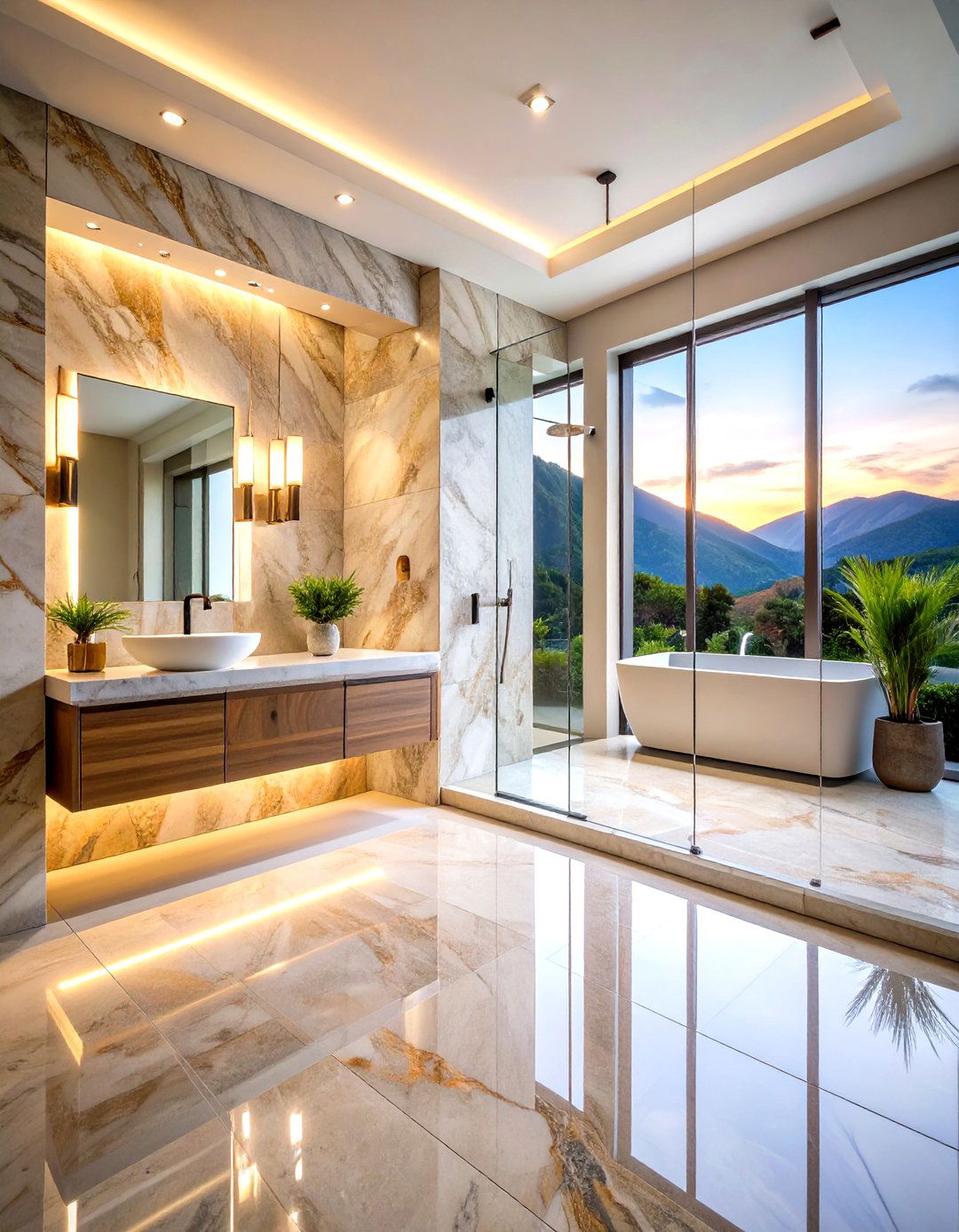
Opting for large-format stone slabs—up to 5′×10′—minimizes grout lines and showcases the stone’s uninterrupted veining or pattern. Materials like porcelain stone look-alikes also offer similar aesthetics with enhanced waterproofing and durability. Slabs make small showers feel more expansive, as human-scale grout lines do not break the visual field. Keep installation precise and ensure proper support for heavier natural stone.
10. Rustic Modern Contrast
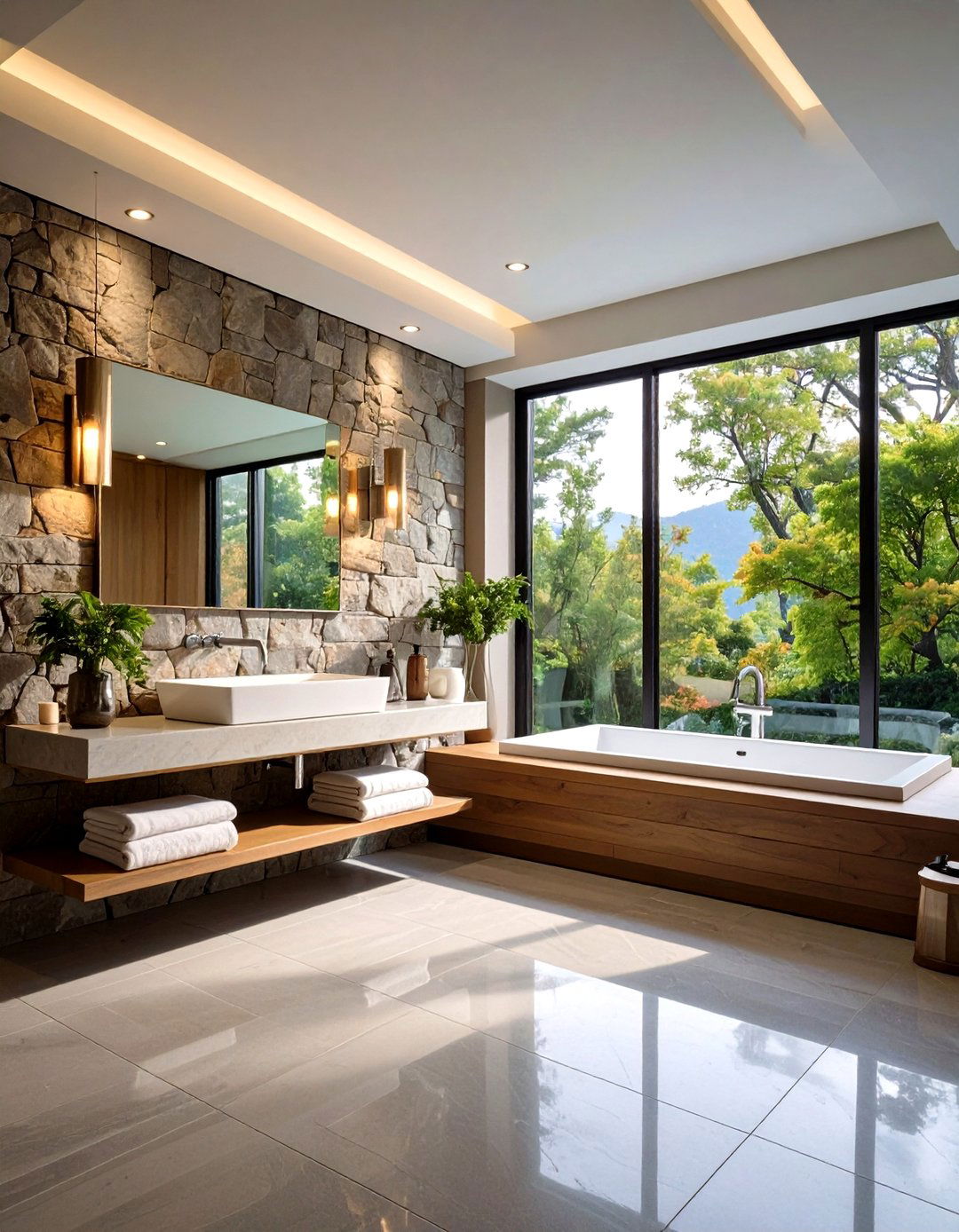
Pair rough-cut stone wainscoting with sleek, modern fixtures for a striking transitional design. For example, a low-profile stone backsplash behind a floating bench juxtaposed with a frameless glass enclosure and chrome fittings merges old-world charm and contemporary minimalism. The rugged stone’s tactile texture balances the clean lines of cabinetry and fixtures, creating an inviting yet refined space.
11. Glass Enclosure with Stone Backdrop
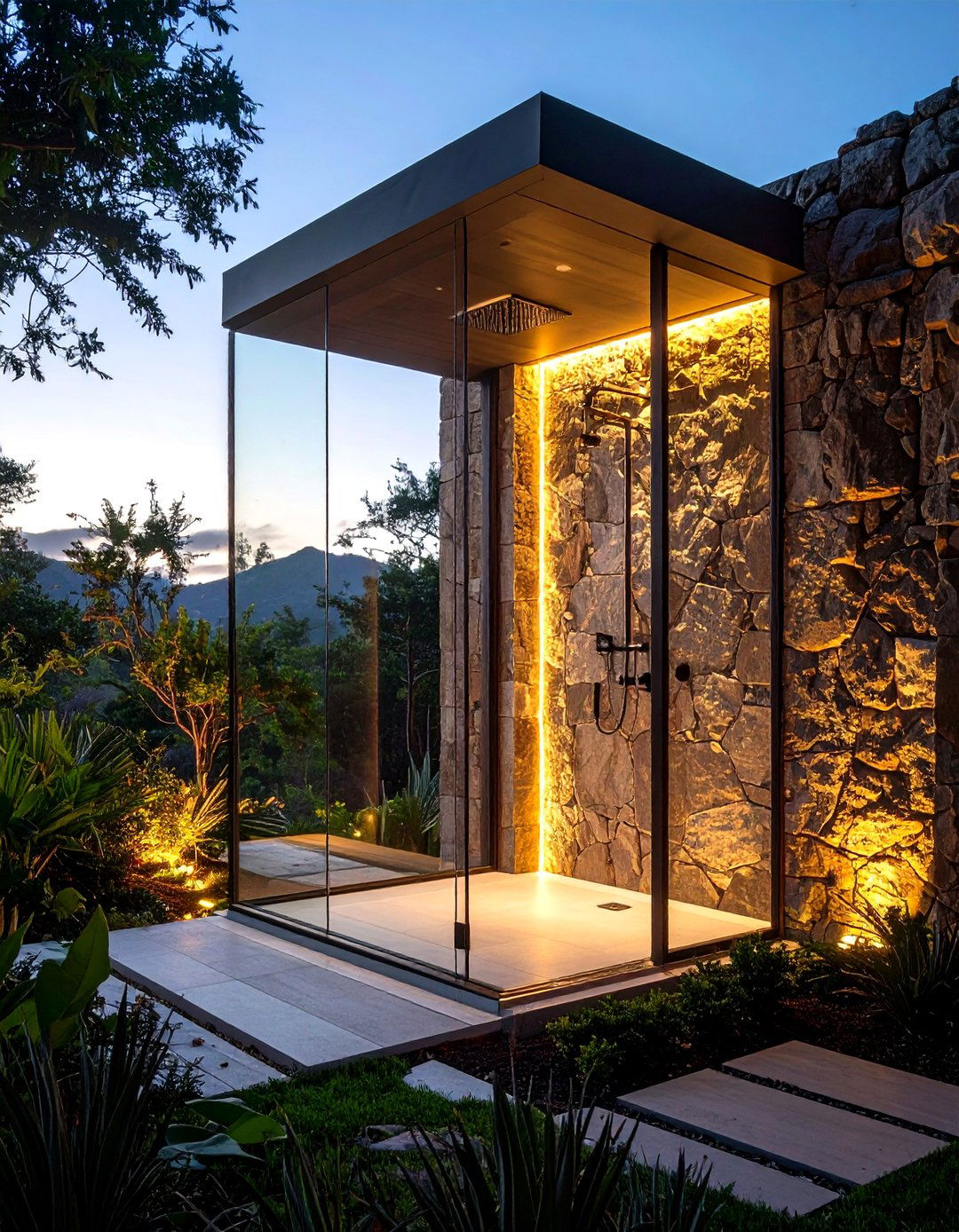
A frameless glass door keeps sightlines clear to a feature stone wall at the shower’s rear. Choose a bold stone—such as dark slate or tumbled travertine—to serve as the backdrop. Natural light or integrated LED strips enhance the stone’s textures. This design emphasizes architectural drama, inviting users to focus on the material artistry rather than the enclosure itself.
12. Curbless Walk-In Stone Shower

Eliminate the shower curb and opt for a gently sloping stone floor that directs water toward a linear drain. Large-format stone tiles—such as limestone or porcelain—ensure a seamless look, while slip-resistant finishes maintain safety. Curbless designs improve accessibility for all ages and abilities, evoking luxury-spa aesthetics. Complete the effect with a hidden threshold and flush-mounted fixtures.
13. Integrated Stone Bench

Incorporate a built-in bench constructed from the same stone as the walls for continuity. A floating design—with concealed supports—gives the illusion of a downscaled bench slicing through the tile. The bench angle and depth should prioritize comfort, with a slight slope for drainage. Use honed finishes on seating surfaces to prevent slips when wet.
14. Contrasting Grout Accents
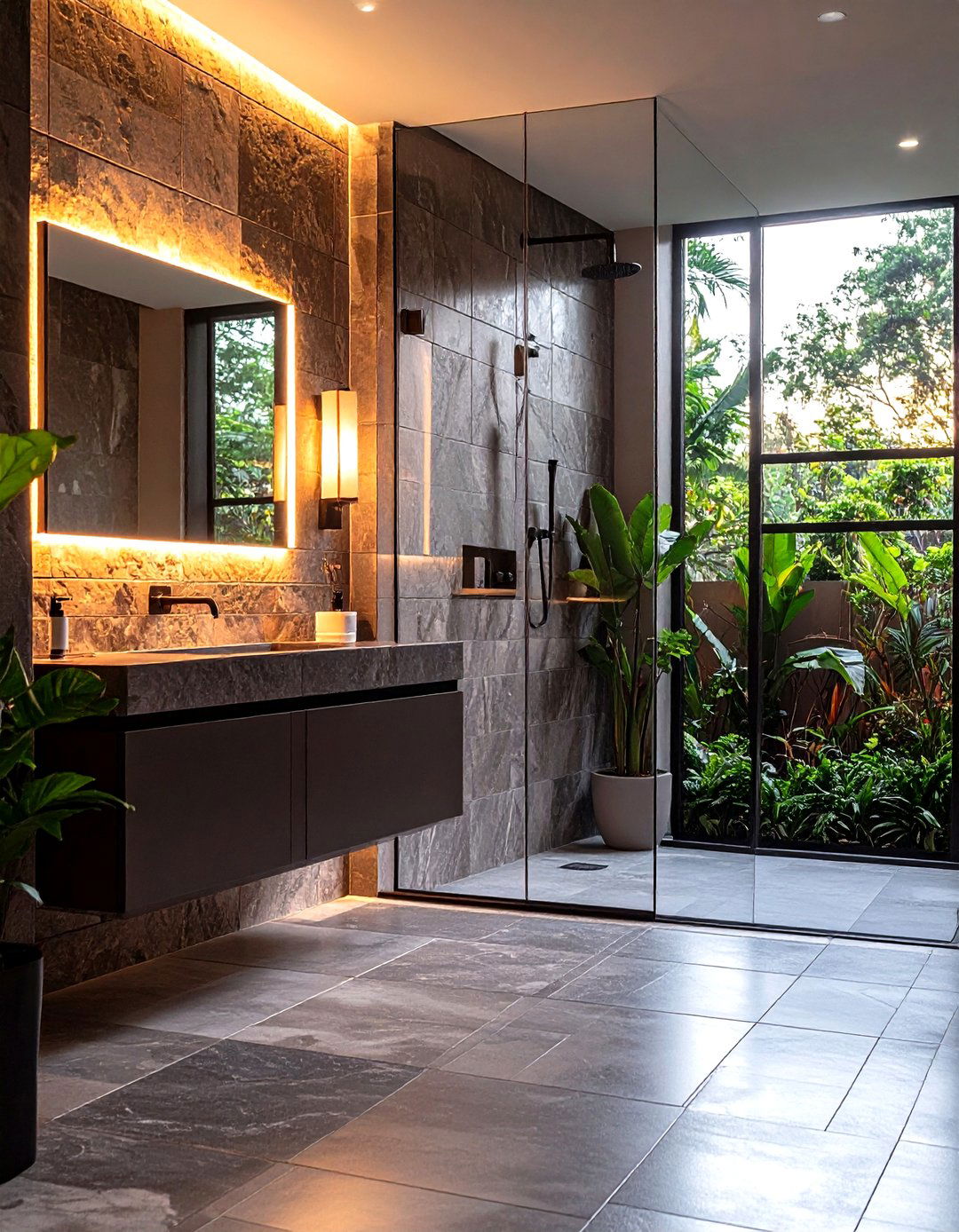
Select grout in a contrasting hue—dark against light stone or vice versa—to accentuate geometric shapes and layouts. For example, charcoal grout with white marble emphasizes rectangular tiles and creates a modern grid effect. Alternatively, white grout with dark slate softens the stone’s strong tones, highlighting each piece’s outline. This design tweak is cost-effective yet delivers high visual impact.
15. Herringbone Stone Tile Layout
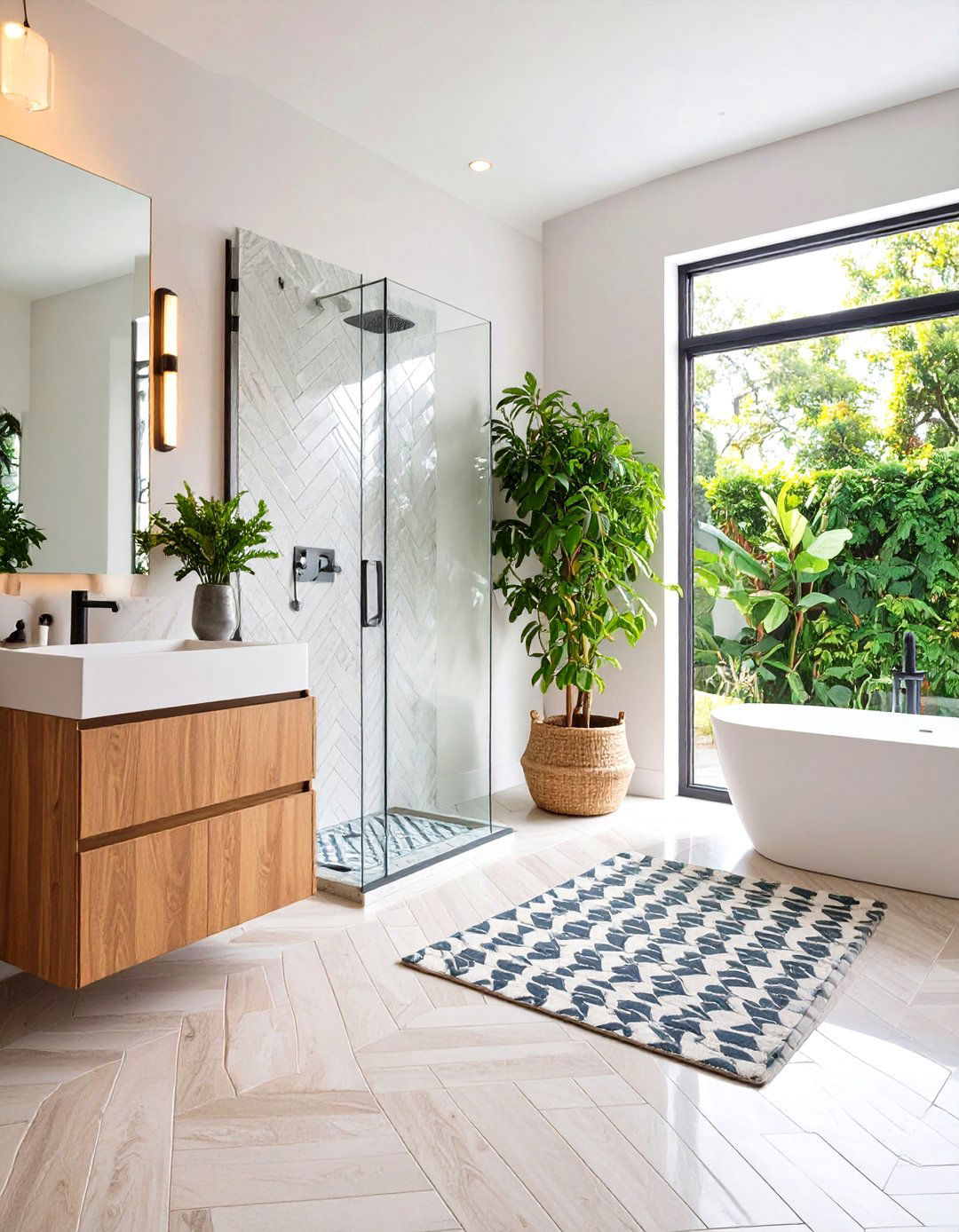
Arrange rectangular stone tiles—like marble or travertine—into a herringbone pattern to introduce motion and sophistication. The zigzag layout elongates the space visually and works well on both walls and floors. A polished finish contrasts nicely with honed adjacent surfaces, while minimal grout lines maintain pattern clarity.
16. Hexagonal Stone Mosaic
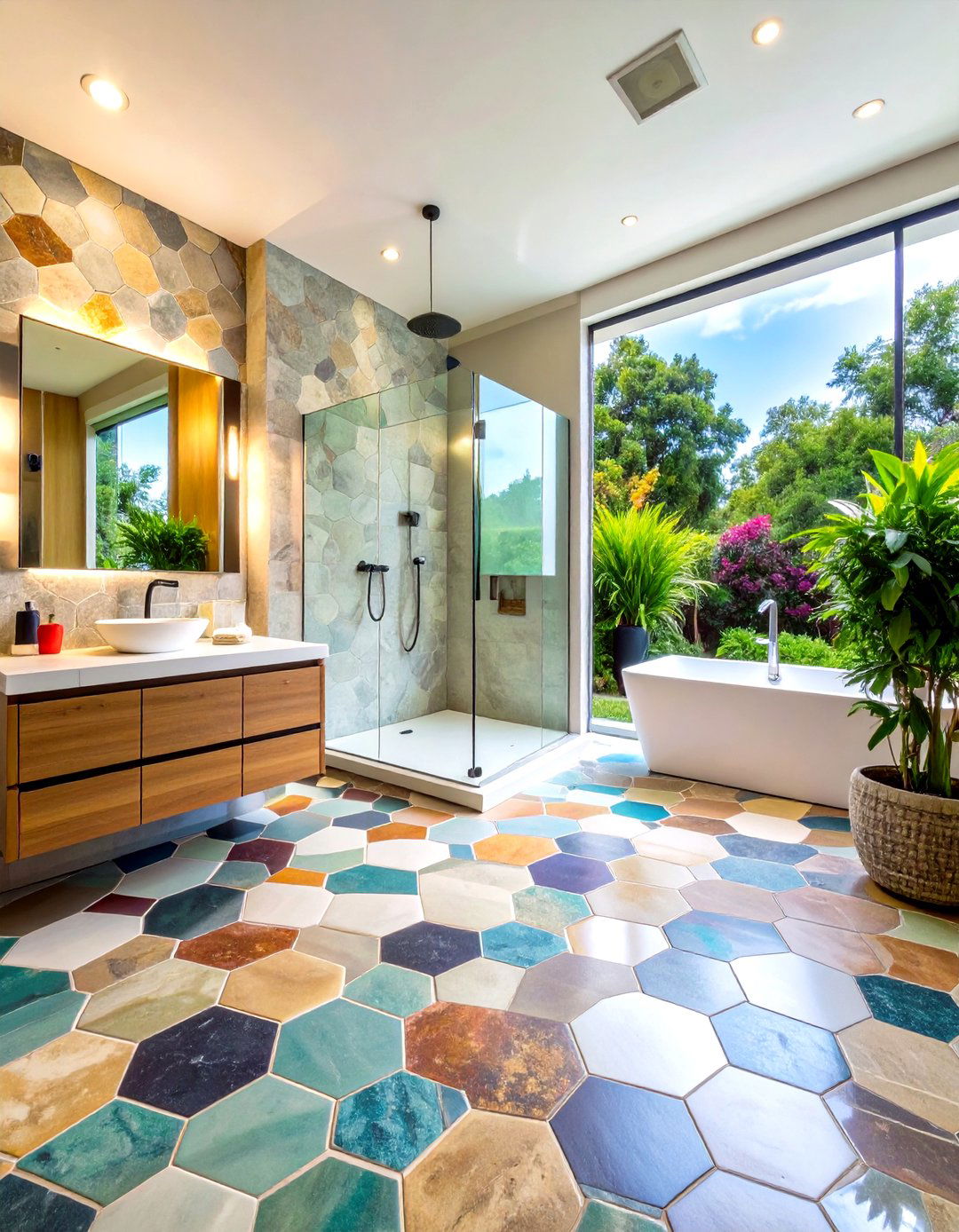
Hexagon tiles crafted from marble, slate, or limestone bring a playful yet elegant geometry to showers. Small-scale hex patterns on the floor transition into larger hex slabs up the walls for a cohesive gradient. Alternating finishes—matte and polished—within the hex grid add subtle depth.
17. Wood-Look Stone Tile Accent

Combine the warmth of wood textures with stone’s durability by choosing porcelain or tumbled limestone tiles that mimic wood grain. Install them as accent strips or entire walls to contrast with smooth marble floors or benches. The wood-look stone resists moisture while introducing organic tones, bridging nature and modern design.
18. Tadelakt-Inspired Stone Plaster
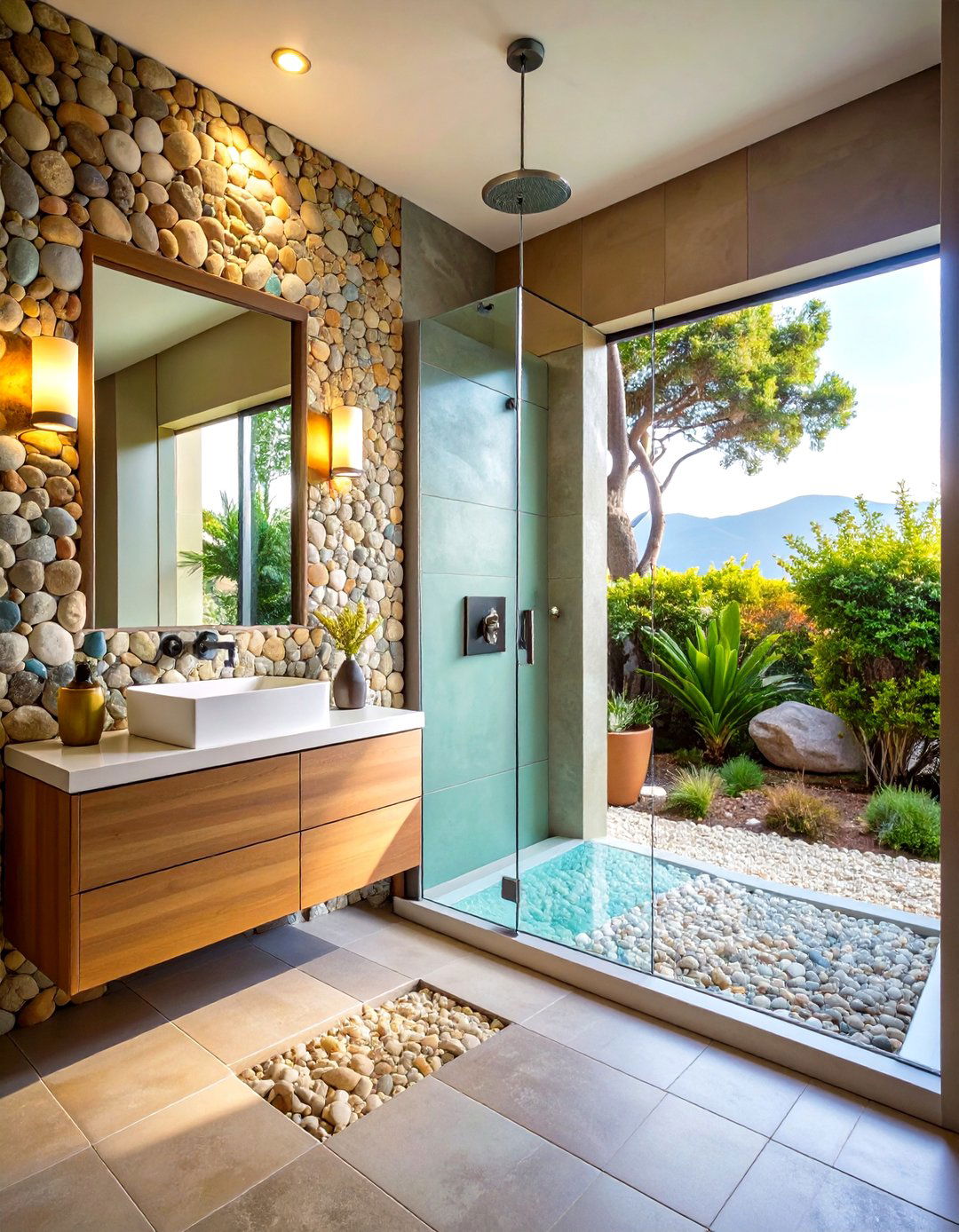
Blend Moroccan tadelakt plaster with embedded stone accents—such as inset pebble borders or stone mosaic niches—for a smooth, waterproof finish. The polished plaster surface feels silky underfoot, while stone details punctuate the walls. This fusion creates an exotic, spa-like retreat reminiscent of riad courtyards.
19. Stacked Stone Waterfall Wall
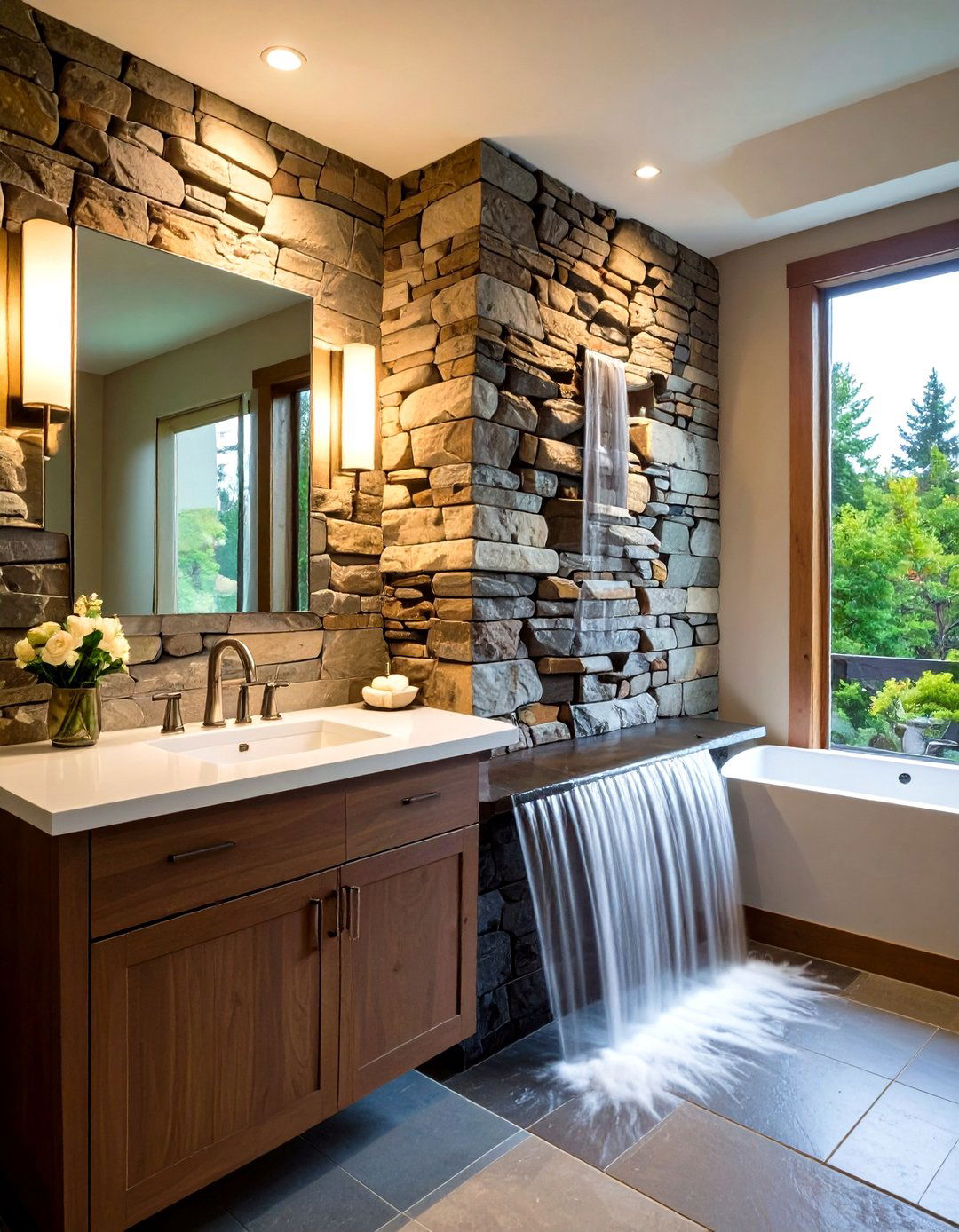
Extend a stacked stone accent beyond the shower into an adjacent wall, allowing water features—like a side-mounted spout—to flow down the rugged surface. The waterfall becomes sculptural art, with textured stone catching light and shadows. Pair with recessed lighting to highlight the uneven planes.
20. Minimalist Slate Paneling
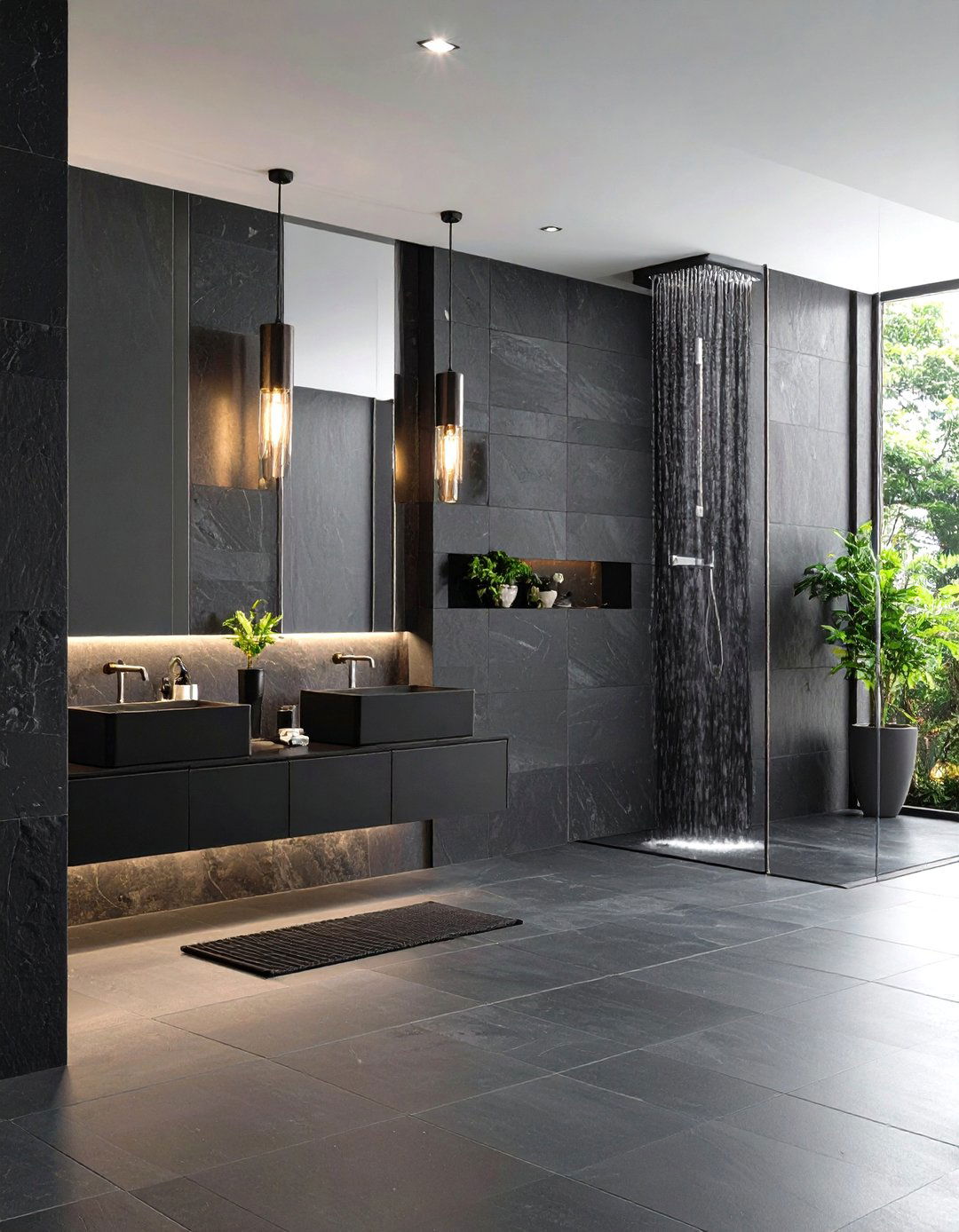
Slate’s deep, moody hues create a minimalist Zen atmosphere when applied as full-height panels. Large, honed slate sheets with minimal seams instill a cave-like serenity. Accentuate verticality with linear drains and slender rainfall fixtures to maintain the clean, uninterrupted slate planes. Matte finishes prevent glare and enhance the stone’s natural striations.
Conclusion:
From bold textures and organic pebble floors to sleek marble slabs and curbless accessibility, these 20 stone shower design ideas demonstrate the versatility of natural materials. Whether your style leans toward rustic charm, modern minimalism, or exotic spa vibes, the strategic choice of stone type, tile pattern, and installation technique can transform an ordinary shower into a luxurious retreat. Prioritize proper waterproofing, thoughtful finishes, and cohesive accents to ensure your stone shower remains both beautiful and functional for years to come.


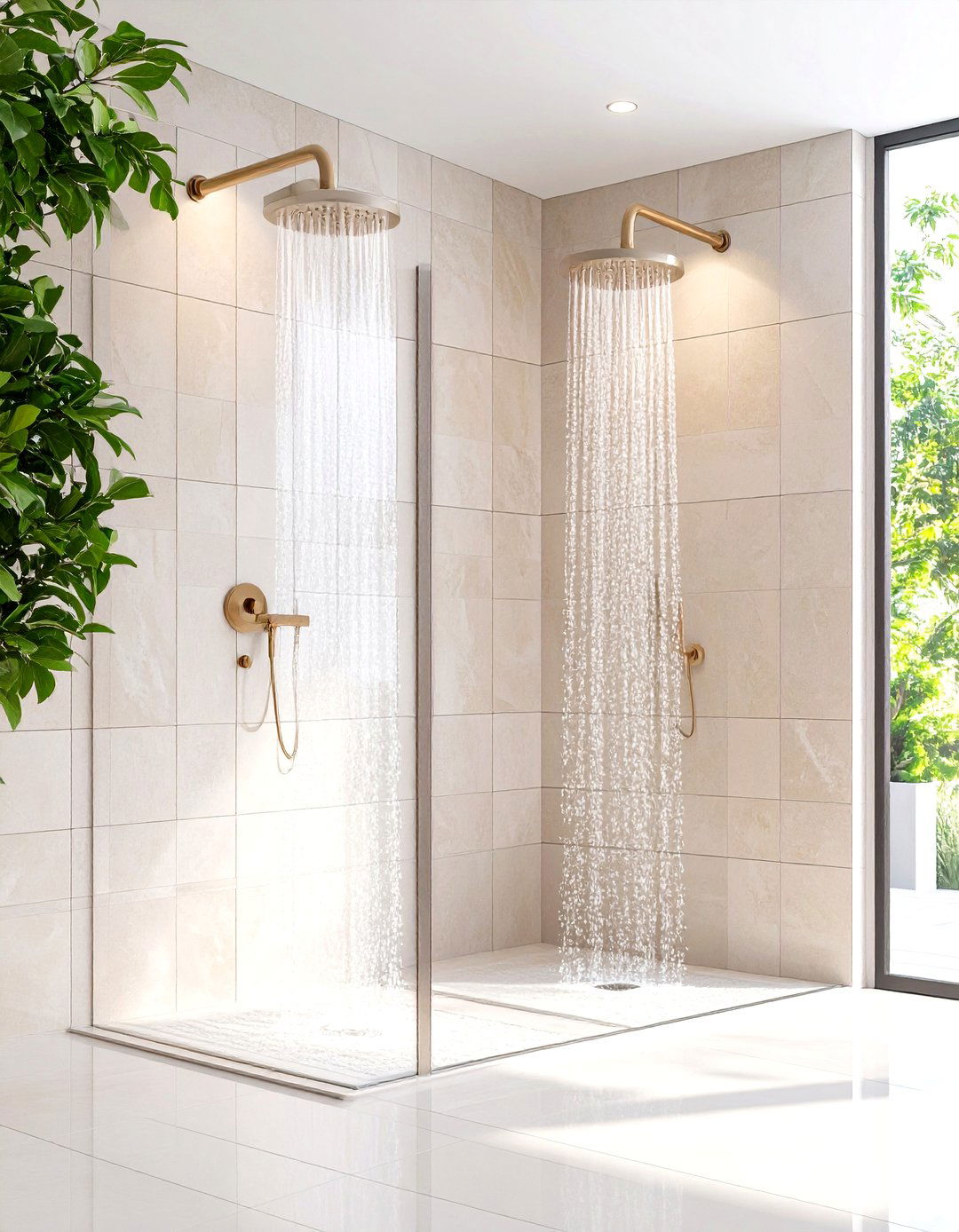
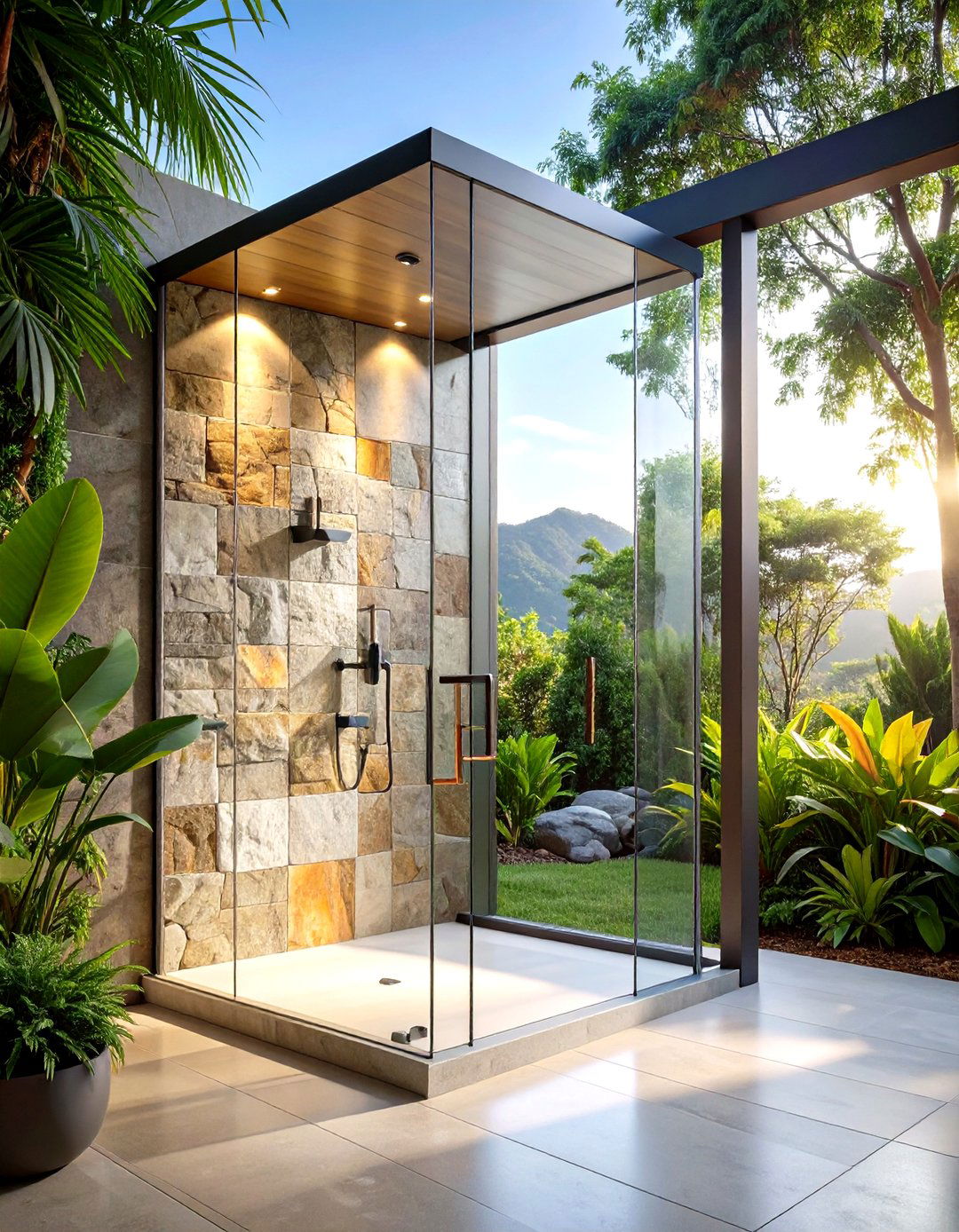
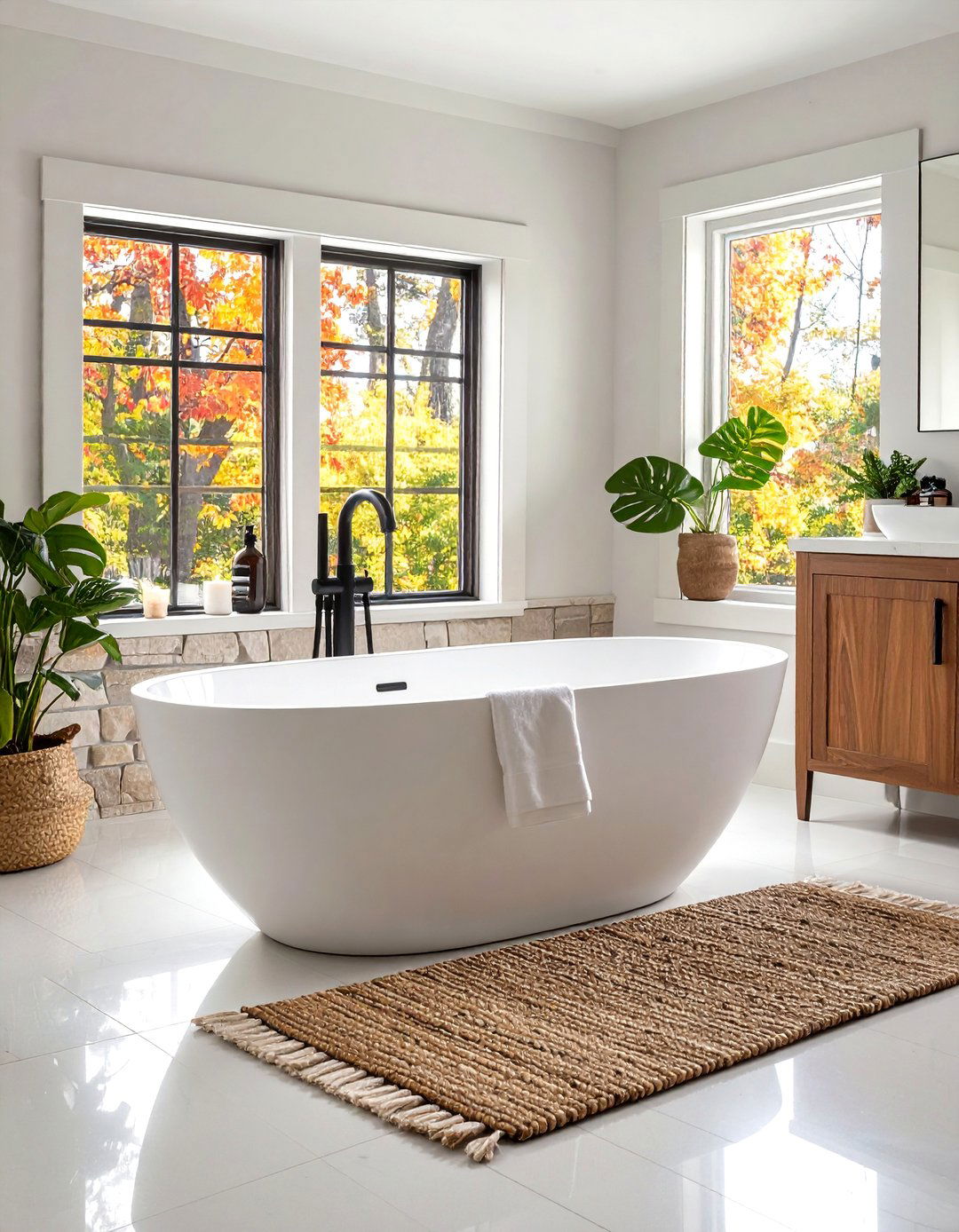
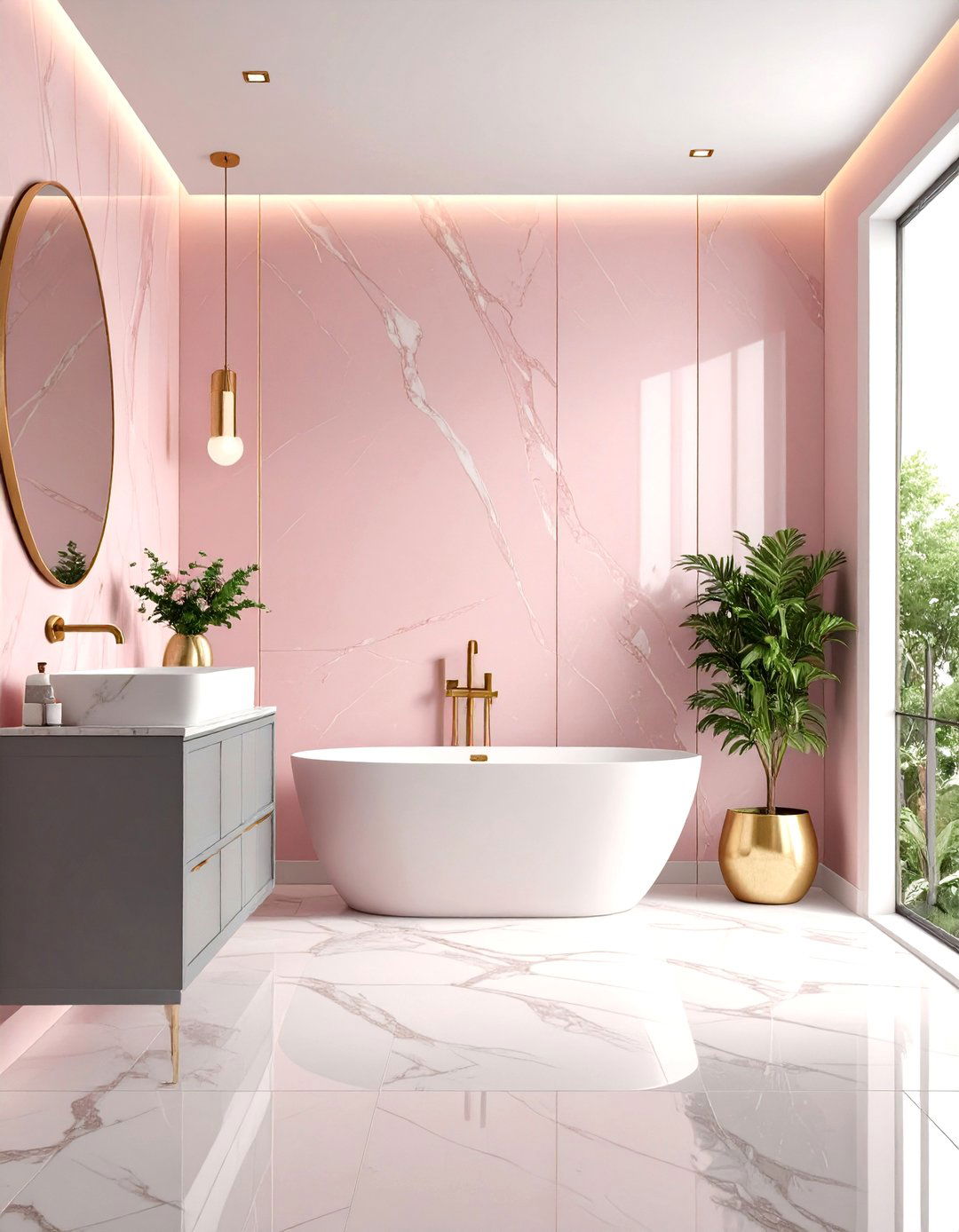
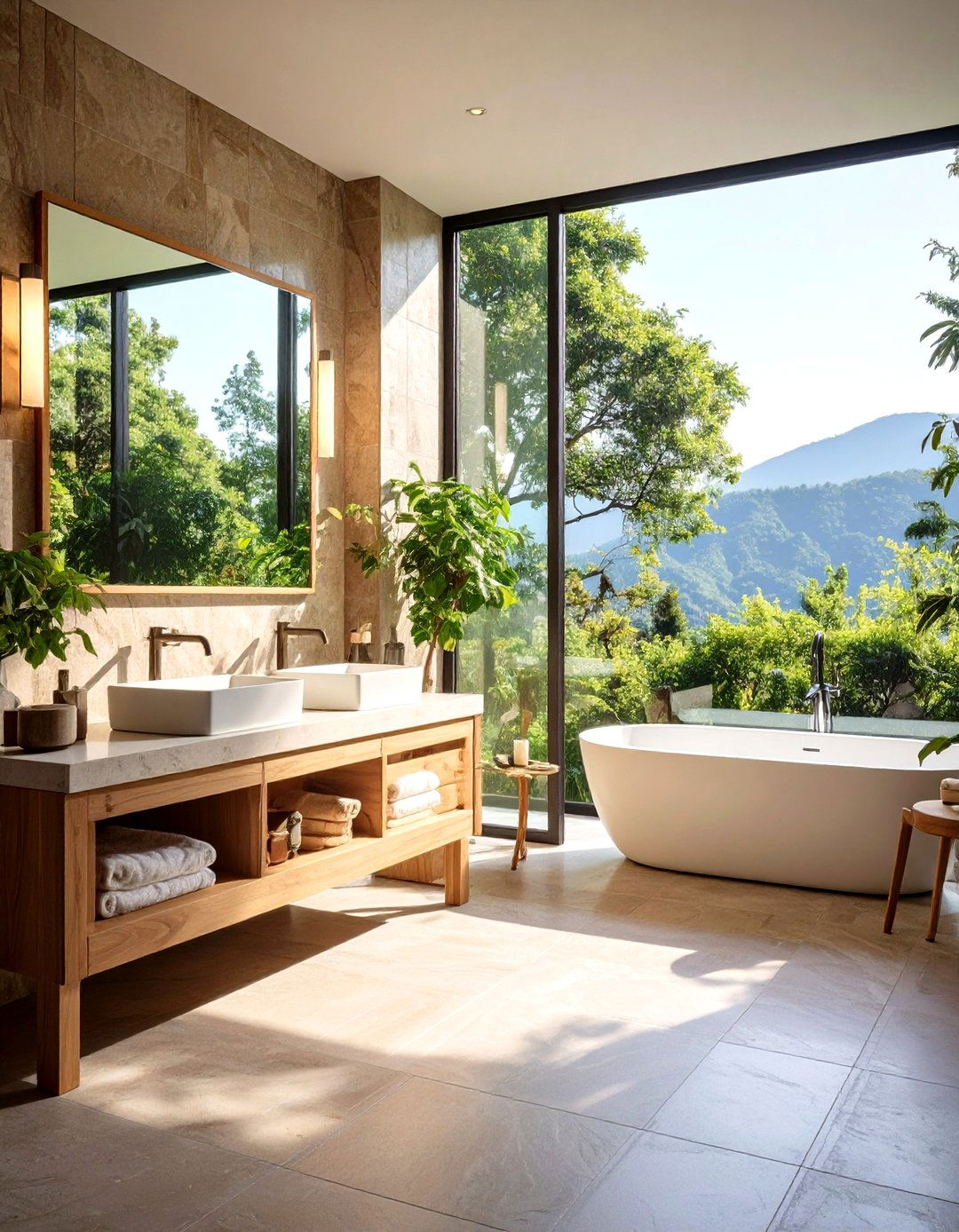
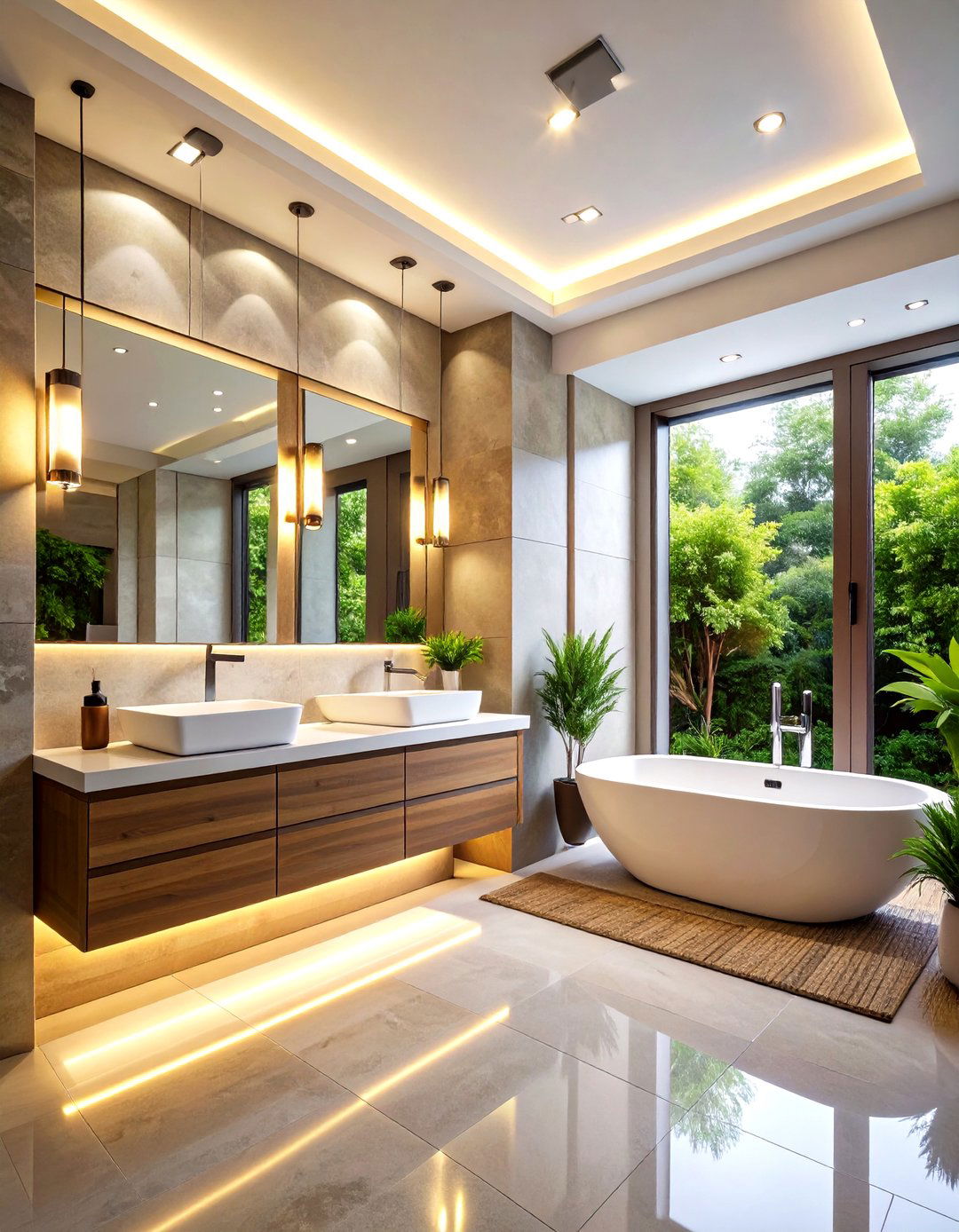
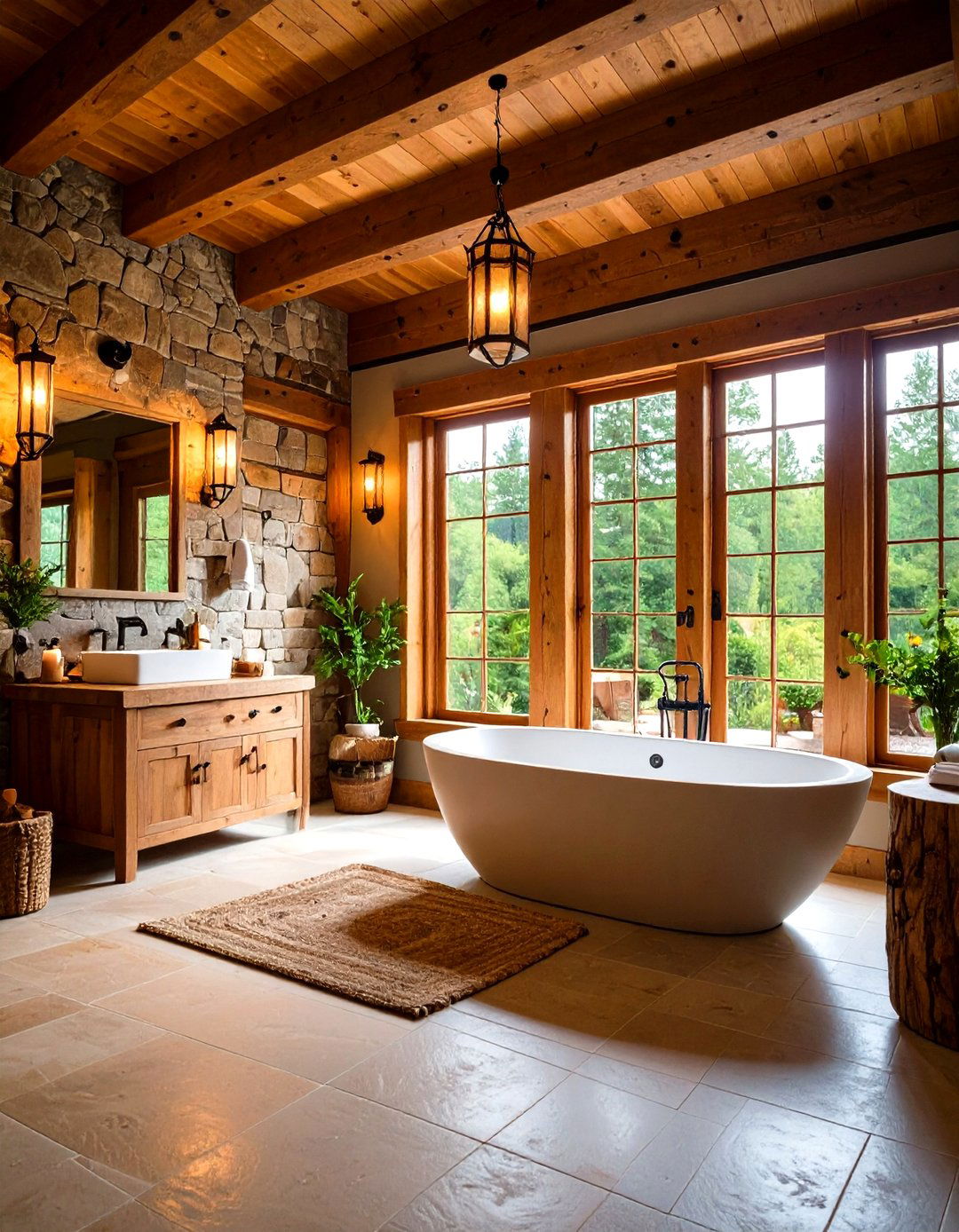
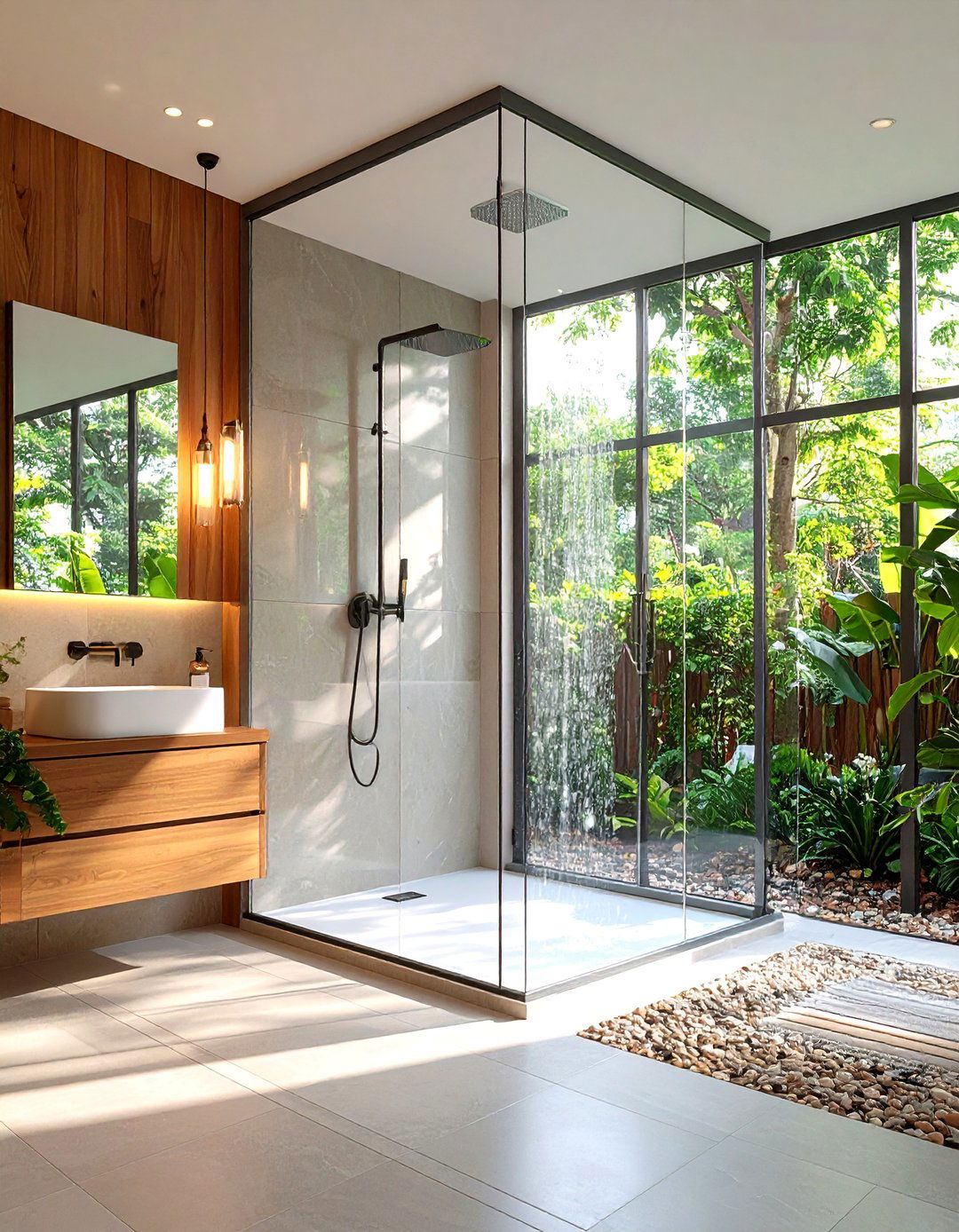
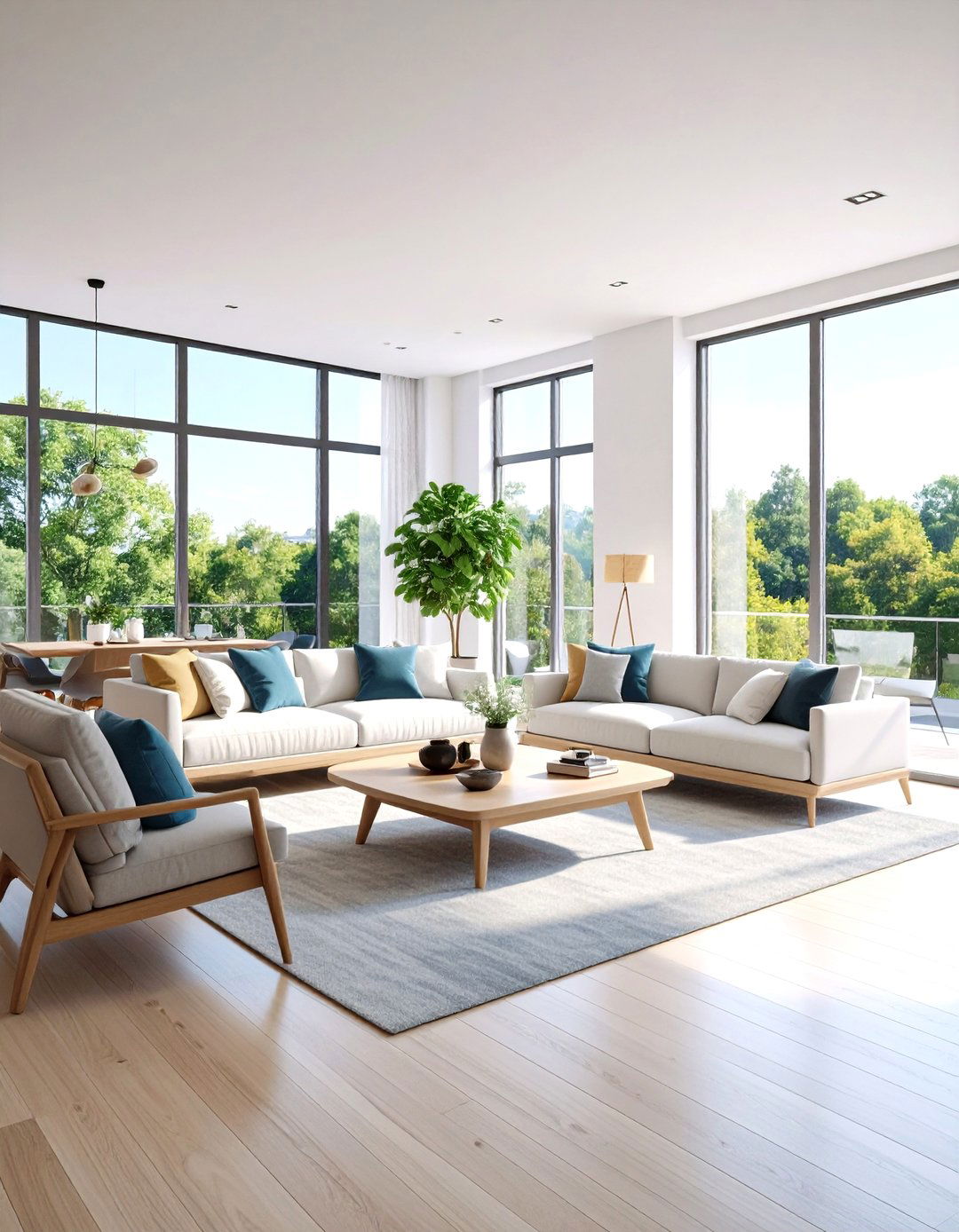

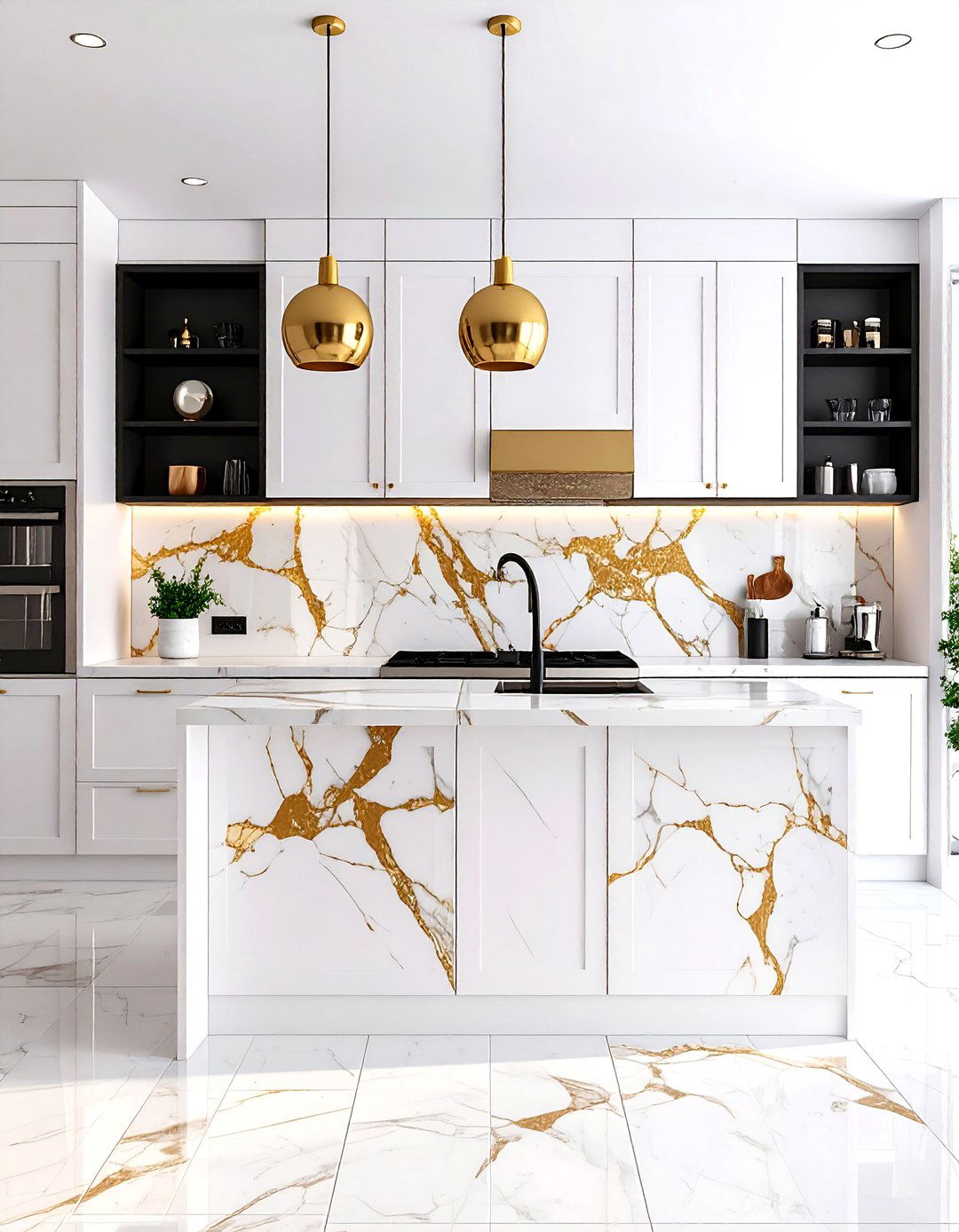
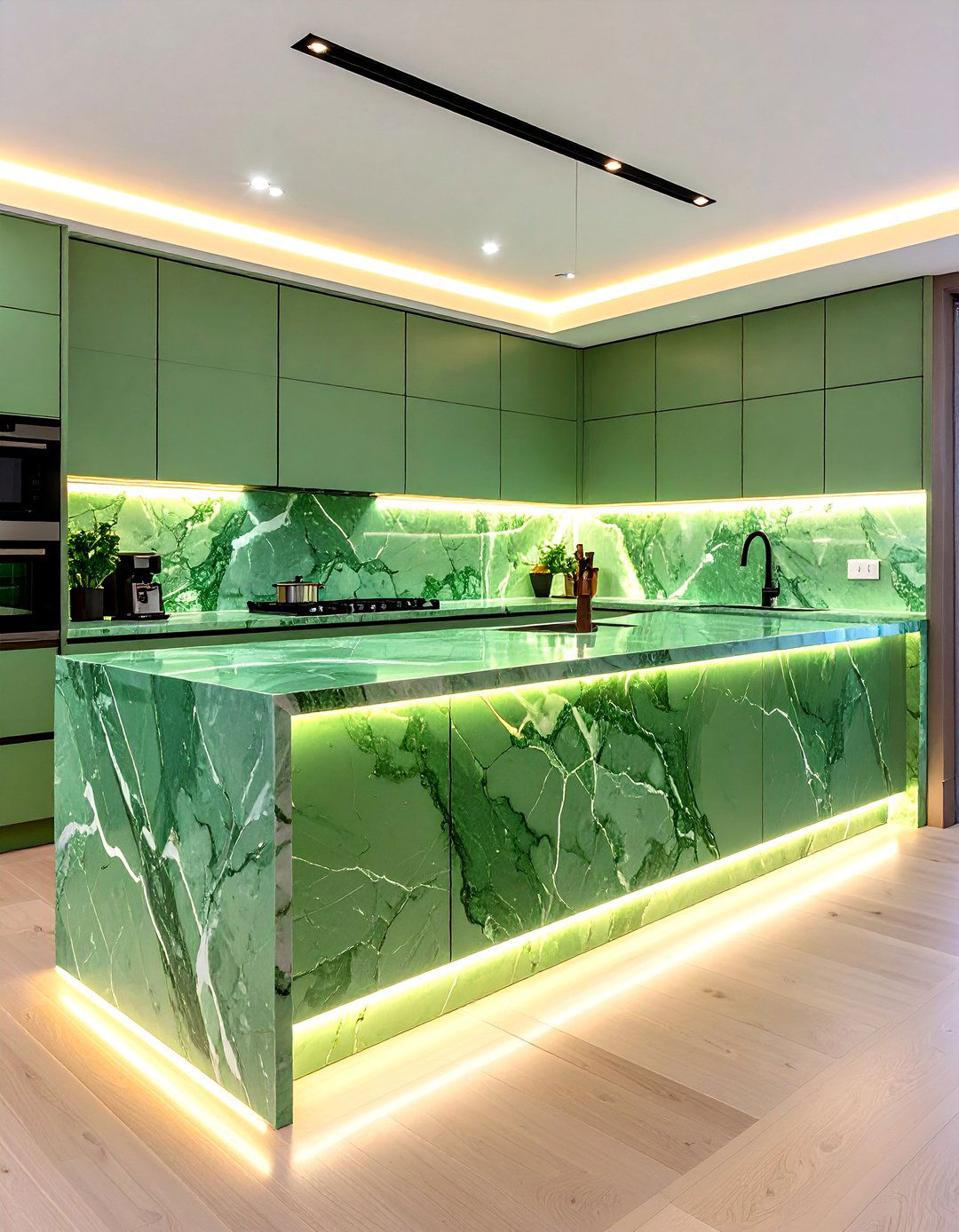



Leave a Reply